Topre Kyushu
・Installation on roof of Technology Center
・Expected reduction: 156 t-CO₂ / year

Topre Kyushu Technology Center
The Topre Group established a Climate Change Measures Department in December 2021 to grasp the current state of CO₂ emissions throughout the group and to manage action plans aimed at the reduction of CO₂ emissions. Aiming for carbon neutrality by 2050, we built a climate change measures system consisting of top management, and are working on this.
Responses to climate change, a global-scale issue, are now a necessity. As an initiative towards the achievement of carbon neutrality, the Topre Group has grasped CO₂ emissions in its production activities and set long-term targets for their reduction. The Topre Group as a whole, both in Japan and overseas, will advance reductions step-by-step to achieve “a 46% reduction in CO₂ emissions in fiscal year 2030*” and “carbon neutrality in fiscal year 2050,” based on improvements in energy saving, the installation of solar panels, purchasing of renewable electricity, and the trading of CO₂ emissions credits.
*In July 2025, the target for the reduction of CO₂ emissions by fiscal year 2030 was changed from a “reduction of 30%” to a “reduction of 46%.”
In addition, the Topre Group has confirmed that our climate change policies are aligned with those of the Japan Auto-Body Industries Association Inc. (JABIA), of which we are a member, and we have clear policies for responding appropriately in the event that any differences arise, as necessary. Specifically, original targets have been set by JABIA, based on the Paris Agreement, and subcommittees have been launched, while seminars are also frequently held for member companies. We examine whether these activities are aligned with the Topre Group’s climate change policies, and whether they deviate significantly from our approach and direction, and we will consider a response in the event of significant deviation.
At each of our bases in Japan and overseas, the Topre Group supports laws and regulations related to climate change, the reduction of energy consumption, etc. (in Japan, this includes the “Act on Promotion of Global Warming Countermeasures (Global Warming Act)” and the “Act on Rationalization of Energy Use and Shift to Non-fossil Energy (Energy Efficiency Act),” as well as related measures, etc. By responding appropriately to these laws, regulations, measures, etc., we will fulfill our social responsibility as we work to realize a sustainable society.
In Japan, we began the installation of solar panels, the main part of our CO₂ reduction measures, in earnest from fiscal year 2022, and our CO₂ emission reductions have increased. Energy conservation measures are also
advancing systematically in parallel, and the reduction results have increased.
Overseas too, like Japan, we are implementing surveys and making plans. We started energy saving measures and the installation of solar panels from fiscal year 2023, and the reduction results are increasing gradually.
Because production volumes have risen in association with the expansion of sales in recent years, we must accelerate CO₂ emissions reductions further if the CO₂ emissions reduction target is taken as an absolute amount.
To accelerate investment in CO₂ reductions, the group set internal carbon pricing (ICP) in Japan from fiscal year 2023. We will review ICP once a year in light of the situation in general and at the company.
“Fiscal year 2024: 10,000 (yen / t-CO₂ )”
To achieve its CO₂ emissions reduction target for fiscal year 2030, the group is strengthening CO₂ emissions reductions by investing in energy-saving equipment in stages at domestic bases based on the news release issued in November 2022.
We are considering the introduction of energy-saving equipment and solar panels, and measures for lower carbon energy at bases in Japan and overseas, and accumulating results in CO₂ emissions reductions.
Plan for the reduction of CO₂ emissions (Japan and overseas)
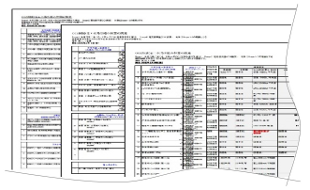
1. We will thoroughly implement everyday improvements for energy saving and the successive installation of solar panels on rooftops where they can be installed.
2. Examples of items for consideration (other than solar panels)
<Lighting>
Switching to LED lights in plants and offices has largely been completed and we are advancing the change from mercury lamps, which consume a lot of electricity, to electricity-saving LED lights. At Tochigi Plant, for example, we reduced electricity consumption by about 70% by switching some lighting from mercury lamps to LED lights.
<Equipment>
We are upgrading to highly efficient power transformers and air conditioners. In addition, we are also working on everyday improvements such as reducing power consumption by adjusting the timing of the turning off of power to air compressors and the heating time of heat source equipment for each season.
<Logistics>
We are conducting activities aimed at the improvement of fuel efficiency by setting annual fuel efficiency targets. In addition, as an initiative to reduce CO₂ emissions
associated with manufacturing, we are actively introducing battery-powered forklifts, which can be expected to reduce CO₂ emissions compared to conventional LPG-powered forklifts. Sagamihara Plant
has introduced a total of 39 battery-powered forklifts since 2017.
<Use of renewable energy>
As an initiative for carbon neutrality, we plan to install solar panels in stages on all plant roofs where installation is possible.
In fiscal year 2024, we achieved carbon neutrality at our Saitama Plant through offsetting by purchasing J-Credits for Scope 1, and switching to power generated from renewable energy for purchased electric power for Scope 2.
In fiscal year 2024, we achieved carbon neutrality at our Gifu Plant, through offsetting by purchasing J-Credits for Scope 1, and using renewable energy generated from local biomass power plants for Scope 2, thereby also contributing to the local community through the “local production and local consumption of electric power.”
・Installation on roof of Technology Center
・Expected reduction: 156 t-CO₂ / year

Topre Kyushu Technology Center
・Installation on part of the roof of Kanda Plant
・Expected reduction: 298.5 t-CO₂ / year
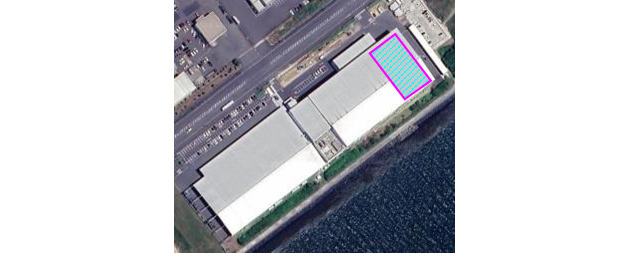
Topre Kyushu Kanda Plant
・Installation on part of the roof of Toin Head Office Plant
・Expected reduction: 508.3 t-CO₂ / year
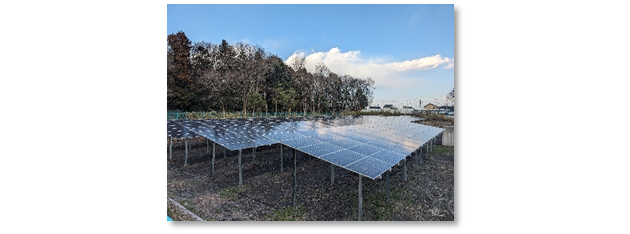
Places of implementation in
fiscal year 2023Places of implementation in
fiscal year 2024
Toin Head Office Plant
・Installation on part of the plant roof
・Expected reduction: 1,889 t-CO₂ / year

Topre (Xiangyang)
・Installation on part of the plant roof
・Expected reduction: 463.6 t-CO₂ / year
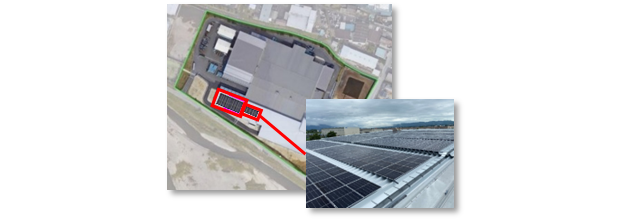
Topre Mexico
・Installation on part of the roof of Kanda Plant
・Expected reduction 277 t-CO₂ / year

Topre Kyushu Kanda Plant
・Installation on part of the roof of Yokkaichi Plant
・Expected reduction: 98.1 t-CO₂ / year
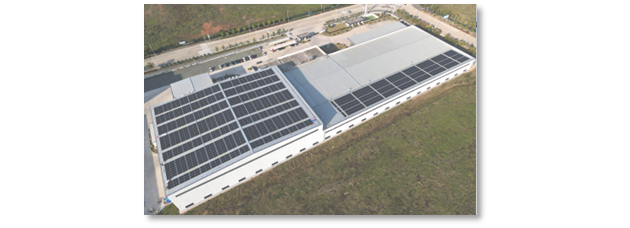
Topre Tokai Yokkaichi Plant
・Installation on part of the plant roof
・Expected reduction: 386 t-CO₂ / year
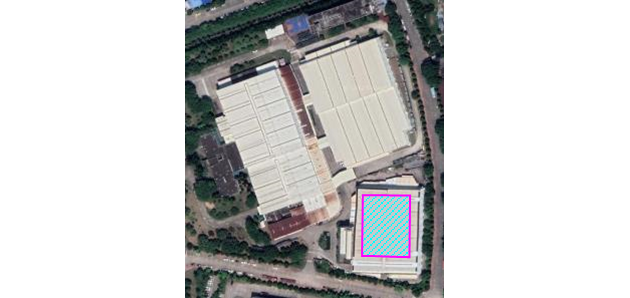
Guangzhou Mitsuike
・Installation on part of the plant roof to be extended
・Expected reduction 922 t-CO₂ / year

Topre India
| Bases | Results of initiatives in fiscal year 2024 | |
| Topre | Sagamihara Plant | ・Upgrading of substation transformers to high-efficiency type: Reduction effect 37 t-CO₂ / year |
| Saitama Plant |
・Achievement of carbon neutrality through switch to electric power generated from renewable energy ・Reduction of power consumption by switching from fluorescent lighting to LED lighting (325 places) |
|
| Hiroshima Plant |
・Upgrading to high-efficiency high-voltage transformers: Reduction effect 1.7 t-CO₂ / year ・Reduction of air blow cleaning work: Reduction effect 3.2 t-CO₂ / year ・Thorough operation management of fuel oil heaters: Reduction effect 23.6 t-CO₂ / year |
|
| Tochigi Plant |
・Conversion to high-efficiency air conditioners ・Upgrading of air conditioners in welfare building (16 units): Reduction effect 5.2 t-CO₂ / year ・Switch to LED lighting ・Switched to LED lighting in welfare building (approximately 200 lights): Reduction effect: 8.5 t-CO₂ / year ・Thorough management of kerosene usage Actual CO₂ emissions from kerosene: 830 t in 2020 to 651 t in 2024 (22% reduction) |
|
| Gifu Plant |
・Achievement of carbon neutrality through switch to electric power generated from renewable energy: Reduction effect: 223 t-CO₂ / year ・Press dust collector improvements: Reduction effect 1 t-CO₂ / year ・Riveter improvements: Reduction effect 0.3 t-CO₂ / year |
|
| Topre Kyushu |
・Installation of solar panels Installation of solar panels on the roof of the Technology Center: Reduction effect 156 t-CO₂ / year Installation of solar panels on the roof of the Kanda Plant: Reduction effect 298.5 t-CO₂ / year ・Upgrading of heaters Upgraded heaters at Kurume Plant (from fuel oil to electric): Reduction effect 21 t-CO₂ / year ・Reduction of power consumption by switching from mercury lights to LED Upgrading of mercury lights to LED for 138 ceiling light fixtures at the Technology Center (mold plant) | |
| Topre Tokai |
・Installation of solar panels Toin Plant: Reduction effect 508.3 t-CO₂ / year ・Reduction of power consumption by switching from fluorescent lighting to LED lighting Yokkaichi Plant: Reduction effect 13.4 t-CO₂ / year | |
| Toho Transportation |
・Replacement with low-carbon trucks (13 vehicles) ・Reduction of power consumption by electrification and upgrading of forklifts Reduction effect 32.7 t-CO₂ / year (upgraded 8 vehicles) ・Replaced gasoline-powered company vehicles with hybrid vehicles(upgraded 3 vehicles) |
|
| Mitsuike | ・Replaced gasoline-powered company vehicles with hybrid vehicles | |
| Toprec |
・Replaced gasoline-powered company vehicles with hybrid vehicles (upgraded 11 vehicles) ・Appropriate air-conditioner temperature setting and detailed on-off management for lighting |
|
| Topre America | ・Improvement of productivity due to improvement of press SPM: Reduction effect 3,539 t-CO₂ / year | |
| Topre Mexico |
・Installation of solar panels: Reduction effect 463.6 t-CO₂ / year ・Conversion to daylight glass for plant ceiling: Reduction effect 23.5 t-CO₂ / year (expected reduction from fiscal year 2025) |
|
| Topre (Foshan) | ・Change TRF lifters from cylinder type to spring type: Reduction effect 6.8 t-CO₂ / year | |
| Topre (Xiangyang) | ・Installation of solar panels: Reduction effect 1,889 t-CO₂ / year | |
| Topre (Wuhan) | ・Reduction in electric power used on standby through separation of electric power switches for robot controllers and workstation control: Reduction effect 1.4 t-CO₂ / year | Guangzhou Mitsuike |
・Introduction of intelligent automatic control systems for power facility management: Reduction effect 86 t-CO₂ / year ・Switching to paperless printing of related forms and electricity conservation when printing: Reduction effect 0.6 t-CO₂ / year |
| Topre Thailand |
・Installation of additional ON/OFF valves for press line automation: Reduction effect 46.6 t-CO₂ / year ・Additional installation of automatic air booster pump for 2,500 ton press machine: Reduction effect 27.6 t-CO₂ / year ・Press air leak detection: Reduction effect 6.1 t-CO₂ / year |
|
| Topre India |
・Suspension of compressors when not needed (ongoing): Reduction effect 728.3 t-CO₂ / year ・Replacement with electricity-saving LEDs (129 lights in the plant): Reduction effect 52.7 t-CO₂ / year |
|
Scope 3 emissions are those by other companies aside from CO₂ emissions in production activities. The Topre Group’s biggest sources of Scope 3 emissions are in “Category 1 Purchased products and services (57%)” and “Category 11 Use of products sold (36%).”
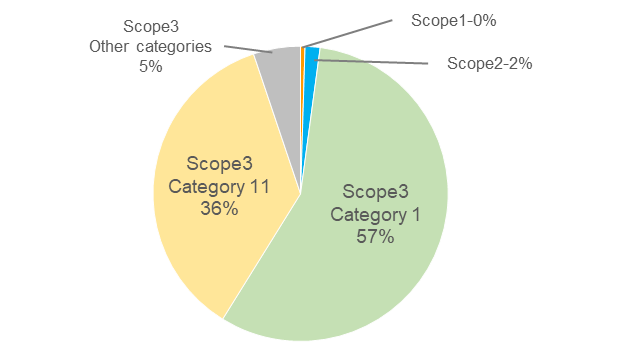
The group recognizes that the reduction of Scope 3 emissions is also an important issue, and has set targets for efforts in categories where there are high emissions and the suppression of CO₂ can be expected.
We will consider the selection and purchase of low-CO₂ materials and parts to reduce Category 1 emissions. With regard to Category 11 reductions, we will develop a lineup of refrigerated vehicles equipped with electric refrigeration equipment and promote replacement with low-GWP refrigerants. We are promoting subsidies for the purchase of electric vehicles with regard to the reduction of commuting by Category 7 employees.
| Subject category |
Subject sector | 2030 target (Compared to fiscal year 2020) |
2050 target (Compared to fiscal year 2020) |
| 1 | Automotive Equipment Division |
30% reduction | 100% reduction |
| Product Division |
25% reduction | 75% reduction | |
| 11 | |||
| 7 | Domestic group companies |
CDP (formerly the Carbon Disclosure Project) is an international nonprofit organization that requests environmental disclosure from companies, cities, regions, and governments regarding climate change, water resources, and forest resources.
It provides a framework for businesses and municipalities to disclose their environmental impact and advance their sustainability efforts.
Topre has been responding to CDP questionnaires since 2017 and currently discloses its responses and evaluation results.

Last updated:October 22, 2025 Update the content of the initiative